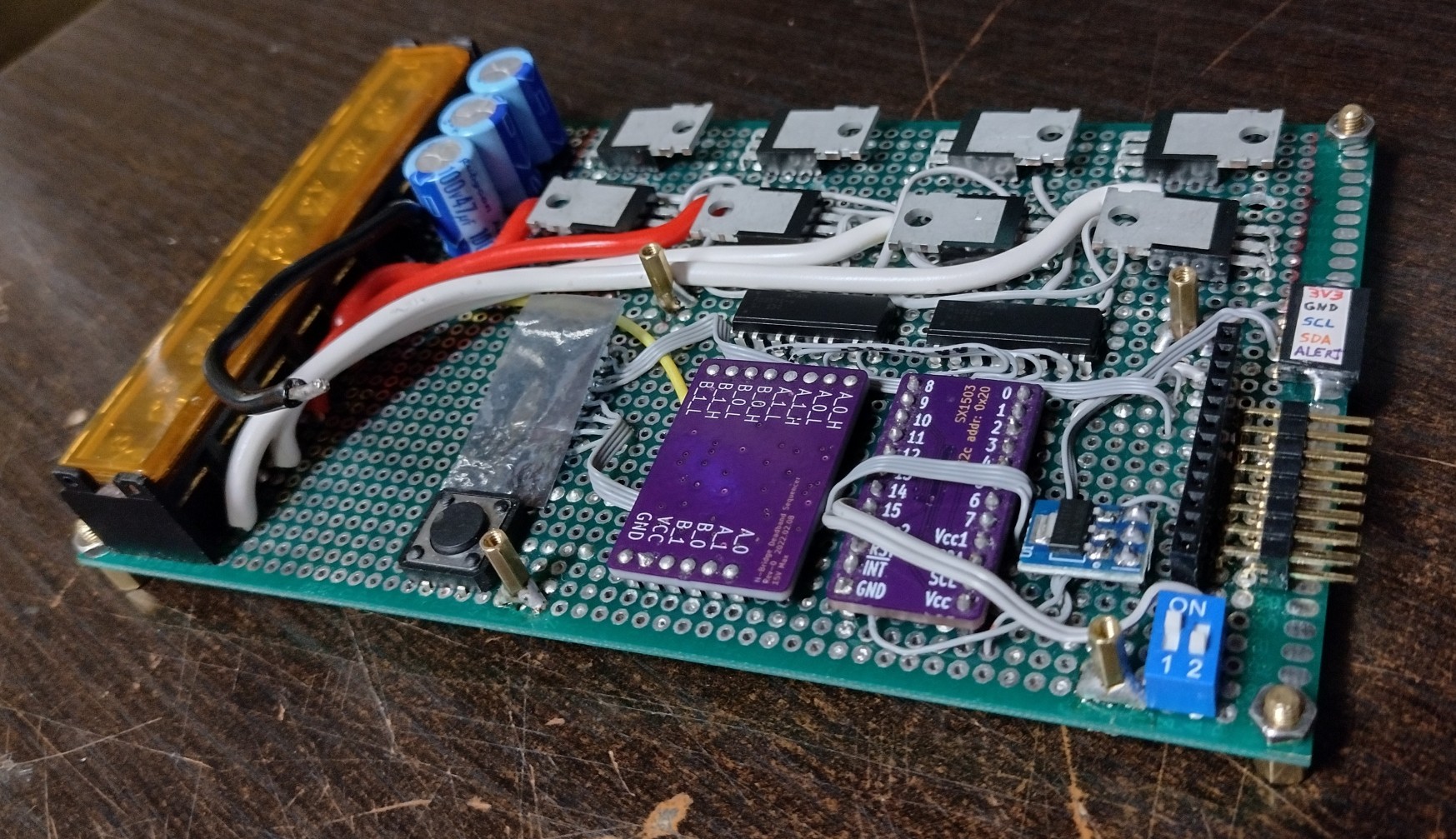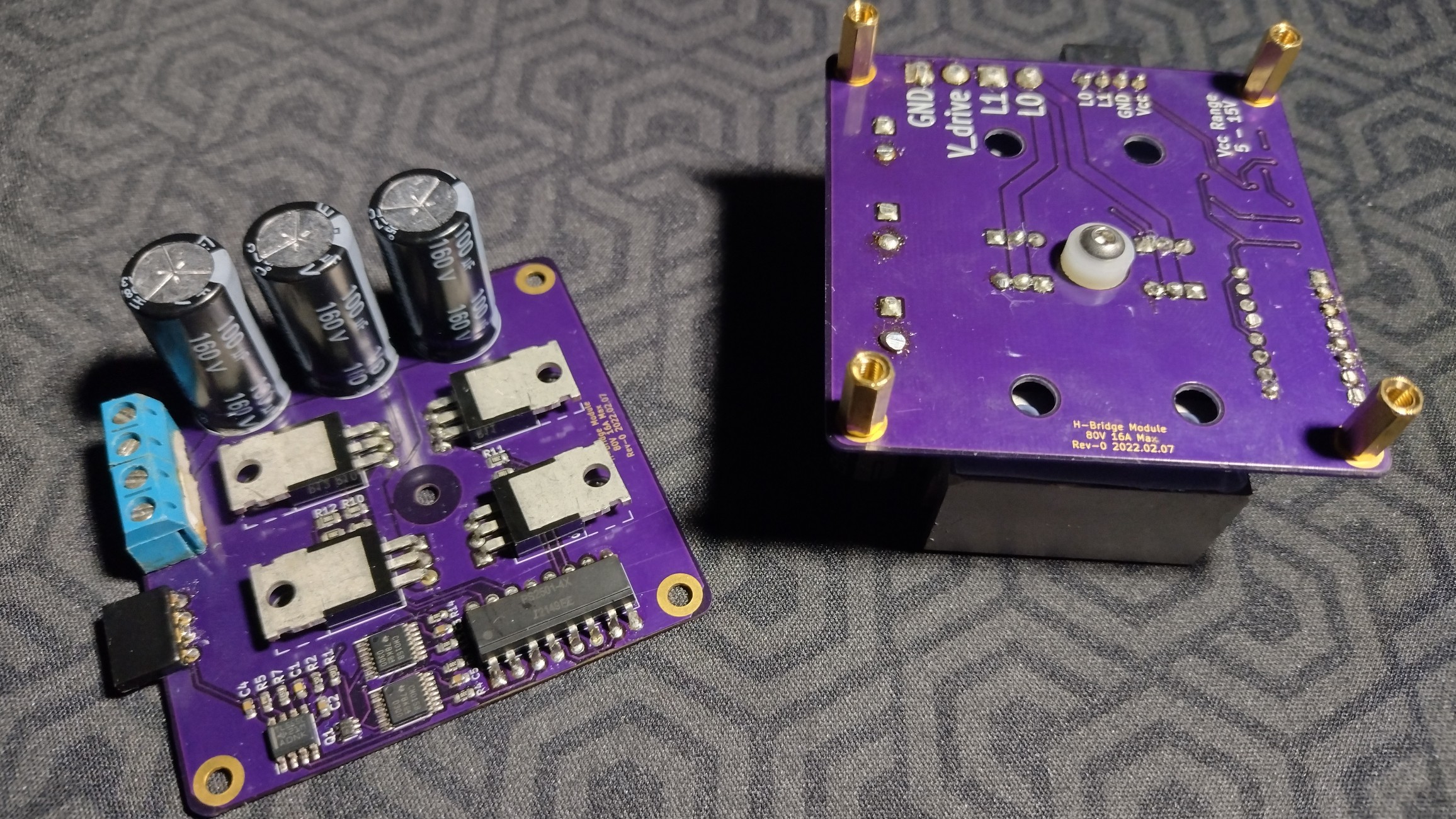-
Destroyed one of the test boards
11/27/2022 at 18:12 • 0 commentsOne of the destructive tests was executed. V_Drive was set to 48V, and a motor was attached with a nominal draw of ~10A while not under load. So when the bridge switches on, the inrush current should detonate one (or both) MOSFETs on the active path. Which is exactly what happened.
CMOS control logic survived the violence (and so, I'd figure the upstream control system would, also). But when the MOSFET blew, the motor was locked ON. Not only that, but it remained on when the control circuit was removed. Which I can't yet explain. I'll do a more complete post-mortem later. It may be that the explosion of Q6's pin1 caused a short elsewhere, as there was a large mess surrounding Q6.
-
Implementation photos
03/07/2022 at 04:12 • 0 commentsThe initial testing of the deadband sequencer went smoothly. A revision will be made to decrease the diameter of the via drill, for reliability reasons. But the pieces I built are good enough for my use, and validate the idea.
This large piece of perf board is part of Calor Sentinam. In the middle of the frame is the deadband sequencer, driving opto-isolators, which are driving a pair of H-bridges. This sequencer board is configured to give ~6ms of deadband.
![]()
These modules are single H-bridges and are otherwise the exact same deign as above and should be good out to 80V/16A. These modules have more capacitance and have been cleaned up for production. The module on the left is shown without a heat sink. These units are slated to be tested destructively under instrumentation.![]()
 J. Ian Lindsay
J. Ian Lindsay
